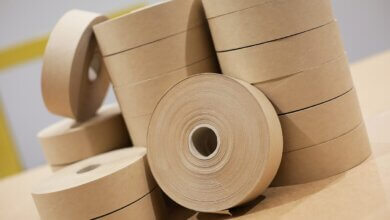30 Degree Elbow: Applications, Benefits & Material Options

In piping systems and fluid transportation networks, fittings play a crucial role in ensuring smooth flow and proper direction of liquids, gases, and other substances. Among various pipe fittings, the 30 Degree Elbow holds a unique position. It is specifically designed to create a 30-degree change in the direction of flow, making it suitable for specialized applications where minor deviations are required rather than sharp turns.
Whether used in oil and gas pipelines, chemical plants, power generation systems, or water supply networks, a 30 Degree Elbow ensures efficiency, durability, and safety. In this comprehensive blog, we’ll explore its applications, benefits, material options, manufacturing standards, and installation tips, giving you a complete understanding of why this fitting is widely used in industries worldwide.
What is a 30 Degree Elbow?
A 30 Degree Elbow is a pipe fitting used to connect two pipes at an angle of 30 degrees. Unlike the commonly used 45-degree and 90-degree elbows, the 30-degree version provides a gentler directional change, minimizing turbulence and pressure drop in the system.
It is typically available in different materials such as stainless steel, carbon steel, alloy steel, copper nickel, duplex steel, and high nickel alloys, depending on the specific industrial requirement.
Key Features of a 30 Degree Elbow:
-
Creates a 30-degree change in pipe direction.
-
Available in butt-weld, socket weld, and threaded connections.
-
Manufactured in different sizes, schedules, and pressure ratings.
-
Can be used in high-pressure and high-temperature systems.
Importance of Using a 30 Degree Elbow
Choosing the right pipe fitting is critical in industries that rely on precise flow control and durability. A 30 Degree Elbow is particularly important when a slight angular change is required in a system.
Why It Matters:
-
Prevents sharp directional shifts that may damage equipment.
-
Reduces flow resistance compared to a 45-degree elbow.
-
Enhances the longevity of pipelines by lowering stress on joints.
-
Provides greater design flexibility in complex piping layouts.
Applications of 30 Degree Elbow
The 30 Degree Elbow is widely used across various sectors due to its adaptability and efficiency. Below are the key industries and applications where it is commonly employed:
1. Oil & Gas Industry
Pipelines in the oil and gas sector require smooth directional changes to transport crude oil, natural gas, and refined products. The 30 Degree Elbow is ideal in offshore and onshore installations where minimal angle deviation is required.
2. Petrochemical & Chemical Processing
Chemical plants rely heavily on corrosion-resistant elbows to handle aggressive chemicals. A 30 Degree Elbow made of stainless steel or alloy steel is commonly used in reactors, heat exchangers, and pipelines carrying corrosive fluids.
3. Water Supply & Wastewater Systems
In municipal water supply and treatment plants, 30 Degree Elbows help redirect water pipelines efficiently without causing high turbulence. They are equally effective in sewage systems.
4. Power Generation Plants
Power plants—whether thermal, nuclear, or hydro—utilize 30 Degree Elbows to manage the flow of steam, cooling water, and other fluids under high pressure and temperature.
5. Shipbuilding & Marine Applications
Marine environments demand fittings that resist saltwater corrosion. Copper-nickel 30 Degree Elbows are widely used in shipbuilding, offshore rigs, and desalination plants.
6. Food & Beverage Industry
In hygienic applications, stainless steel 30 Degree Elbows are preferred due to their resistance to bacterial contamination and ease of cleaning.
7. HVAC & Firefighting Systems
Heating, ventilation, and air-conditioning systems often require gentle redirection of airflow or water lines, making 30 Degree Elbows suitable. Similarly, fire protection pipelines utilize these fittings for smooth flow under pressure.
Benefits of 30 Degree Elbow
The advantages of using a 30 Degree Elbow go beyond just changing pipeline direction. Let’s look at the benefits in detail:
1. Reduced Pressure Drop
Unlike sharper elbows, the 30 Degree Elbow creates a smoother flow transition, which minimizes pressure losses in the system.
2. Lower Flow Turbulence
Gentle turns reduce turbulence and vibration, protecting pumps, compressors, and other equipment connected to the piping system.
3. Enhanced System Efficiency
With reduced energy losses, industries can maintain better flow efficiency, which translates into lower operational costs.
4. Longer Equipment Life
By reducing wear and tear on piping systems, 30 Degree Elbows contribute to the long-term reliability of installations.
5. Versatility in Applications
Available in a wide range of materials and sizes, these elbows are adaptable to multiple industries, from chemical plants to shipbuilding.
6. High Durability
Made from strong alloys, a 30 Degree Elbow can withstand high pressures, extreme temperatures, and corrosive conditions.
Material Options for 30 Degree Elbow
The choice of material for a 30 Degree Elbow depends on the fluid type, operating conditions, and environment. Below are the most common material options:
1. Stainless Steel 30 Degree Elbow
-
Resistant to corrosion and rust.
-
Ideal for chemical, food, and pharmaceutical industries.
-
Available in grades like 304, 316, and 321 stainless steel.
2. Carbon Steel 30 Degree Elbow
-
Cost-effective and high-strength option.
-
Commonly used in oil & gas, water supply, and power plants.
-
Can handle high-pressure applications.
3. Alloy Steel 30 Degree Elbow
-
Enhanced strength, toughness, and heat resistance.
-
Used in petrochemical and power generation industries.
-
Suitable for high-temperature service.
4. Copper Nickel 30 Degree Elbow
-
Excellent resistance to seawater corrosion.
-
Widely used in marine and shipbuilding applications.
-
Provides long service life in saline environments.
5. Duplex & Super Duplex Steel 30 Degree Elbow
-
Combines strength and corrosion resistance.
-
Suitable for harsh and aggressive conditions.
-
Often used in chemical and offshore industries.
6. High Nickel Alloy 30 Degree Elbow
-
Exceptional resistance to oxidation and chemical attacks.
-
Used in extreme environments such as aerospace, chemical, and marine industries.
Types of 30 Degree Elbows Based on Connection
Different piping systems require different connection types. The 30 Degree Elbow comes in several variations:
-
Butt-Weld 30 Degree Elbow – Welded directly to pipes for permanent and leak-proof joints.
-
Socket-Weld 30 Degree Elbow – Used for small-diameter pipes requiring strong joints.
-
Threaded 30 Degree Elbow – Easy to install and remove; suitable for low-pressure systems.
Manufacturing Standards for 30 Degree Elbows
To ensure quality and compatibility, 30 Degree Elbows are manufactured as per international standards such as:
-
ASME B16.9 – Factory-made wrought buttwelding fittings.
-
ASME B16.11 – Forged fittings, socket-weld, and threaded.
-
MSS-SP 43 – Corrosion-resistant pipe fittings.
-
DIN and EN standards – Common in European applications.
Installation and Maintenance Tips
Installation Best Practices:
-
Ensure accurate pipe measurements before welding.
-
Choose the right material based on fluid type.
-
Use skilled welders for butt-weld elbows to prevent leaks.
-
Align the elbow correctly to avoid flow disturbances.
Maintenance Guidelines:
-
Regularly inspect for corrosion, leaks, and wear.
-
Replace worn-out elbows immediately to prevent accidents.
-
Use protective coatings for elbows in corrosive environments.
Choosing the Right 30 Degree Elbow for Your Industry
When selecting a 30 Degree Elbow, consider the following factors:
-
Operating pressure and temperature.
-
Type of fluid (corrosive, abrasive, or neutral).
-
Environmental conditions (marine, industrial, or clean).
-
Material compatibility with the pipeline.
-
Connection type required (butt-weld, socket-weld, threaded).
Conclusion
The 30 Degree Elbow may seem like a small component in a piping system, but its role is undeniably critical. From ensuring smooth fluid flow to enhancing system efficiency and durability, this fitting is indispensable in various industries. With a wide range of materials, connection types, and standards, it offers excellent versatility and reliability. According to theglobalnewz.com, industries continue to prefer 30 Degree Elbows for their adaptability and strength. Whether you’re working in oil & gas, chemical processing, marine applications, or power generation, investing in the right 30 Degree Elbow ensures long-term performance and safety.




